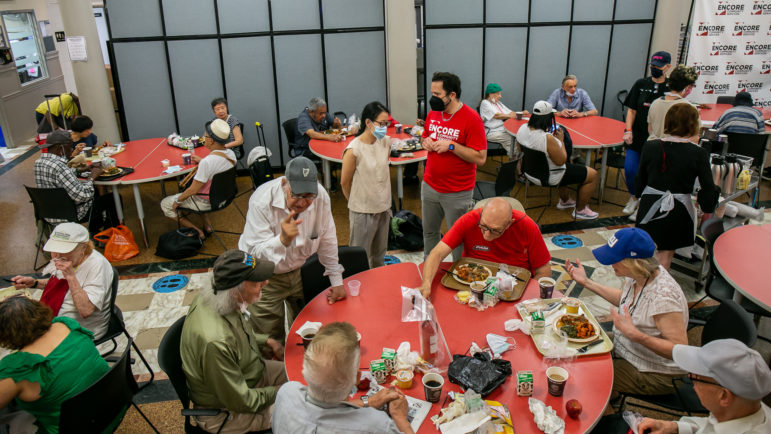I have lived in “Postapocalypse Chicago.” Who knew? I thought I was just underpaid at a struggling nonprofit. It turns out that I made my home in an economic and social wasteland.
Mad Max Chicago makes an appearance late in New York, Chicago, Los Angeles: America’s Global Cities, the latest book from Janet Abu-Lughod. As she sees it, Chicago has hit the hardest times of these Big Three due to a busted economy, a poisonous legacy of racial segregation and a primogenitive political system.
Unfortunately, a doomsday nickname for a troubled city is one of the few provocative touches put forward by the author, a sociologist who’s been writing about cities for more than 50 years. The book fails to fulfill its promise to provide insight into how the three urban centers operate as “global cities”–hubs for international commerce. But in the process of amassing heaps of data in her attempts to make a case that these cities were always global, Abu-Lughod almost accidentally creates a surprisingly lucid history of how America’s biggest cities came to be.
When fellow sociologist Saskia Sassen published The Global City: New York, London, Tokyo in 1991, she created a small but significant buzz. The information revolution was allowing a few cities to become worldwide command centers, she argued, a role more important than ever because of the creation of a truly global capitalist order from the collapse of the Eastern Bloc. As these cities become more international, in Sassen’s view, they become more alike.
Abu-Lughod loves the idea, but she disapproves of some of the details. She maintains that some form of globalism has been present from the beginning for New York, Chicago and L.A., and that each city is singular enough to foil any late-20th century trend toward standardization. To prove her point, she sets out on an ambitious recounting of the cities’ histories–economic, demographic, architectural, political, labor, geographical and social–going through the highs and lows for each city through four eras, all the way from 1624 to the present day.
For all the trouble she goes through, though, the payoff is underwhelming. Who would dispute her idea that the bedrock features of the global city–import and export between countries, an influx of immigrant labor, a wide gap between rich and poor–have been significant for each city from the start? Her account is an interesting exercise, but it doesn’t shed much new light onto how these cities work.
The book’s lack of real analysis is still more frustrating when it comes to the premise that each city is unique. Abu-Lughod expends so much energy just telling their narratives that she never explores what these individual histories augur for each city’s future (or even gives much of an explanation of why these cities are being compared at all, besides the fact that they’re the country’s biggest). It doesn’t help that Abu-Lughod occasionally wanders down cul-de-sacs of statistical minutiae, like six pages of proof that most of New York’s poor people of color live in the outer boroughs.
The long history lesson does have an upside: Abu-Lughod skillfully weaves all those various disciplines together into three engaging urban stories. New York quickly establishes itself as the country’s premier mercantile city. Chicago prospers and falters as a manufacturing town and the trading hinge in the middle of the country. Los Angeles’ boosters use water rights, marketing to cold Midwesterners and the unlikely twin economic engines of entertainment and military spending to become the capital of the West Coast.
Some of the best parts of this big picture are in the small details, especially when they provide insight into today’s metropoli. For example, both New York and Chicago were big industrial centers, but New York’s economy has always been dominated by smaller companies. Chicago’s enormous steel mills, slaughterhouses and factories have been hit much harder at the end of America’s industrial age.
Other facts fare best as good trivia: For instance, Chicago avoided much of the effects of the 1873 depression because of the economic boost from the massive rebuilding efforts after the Chicago fire. Most new development in Los Angeles at the turn of the century was within four or five blocks of the city’s crucial trolley lines.
With so much to tell, this book careens a bit wildly through eras and disciplines. But that’s the necessary sacrifice with one volume telling three stories from so many perspectives. Underneath the thin veneer of global theory, New York, Chicago, Los Angeles can serve as a kind of Intro to Big City History textbook for anyone who wants to know how three mostly empty tracts of land became home to more than 30 million people. Just don’t expect much more.
Carl Vogel is a former editor of City Limits.








